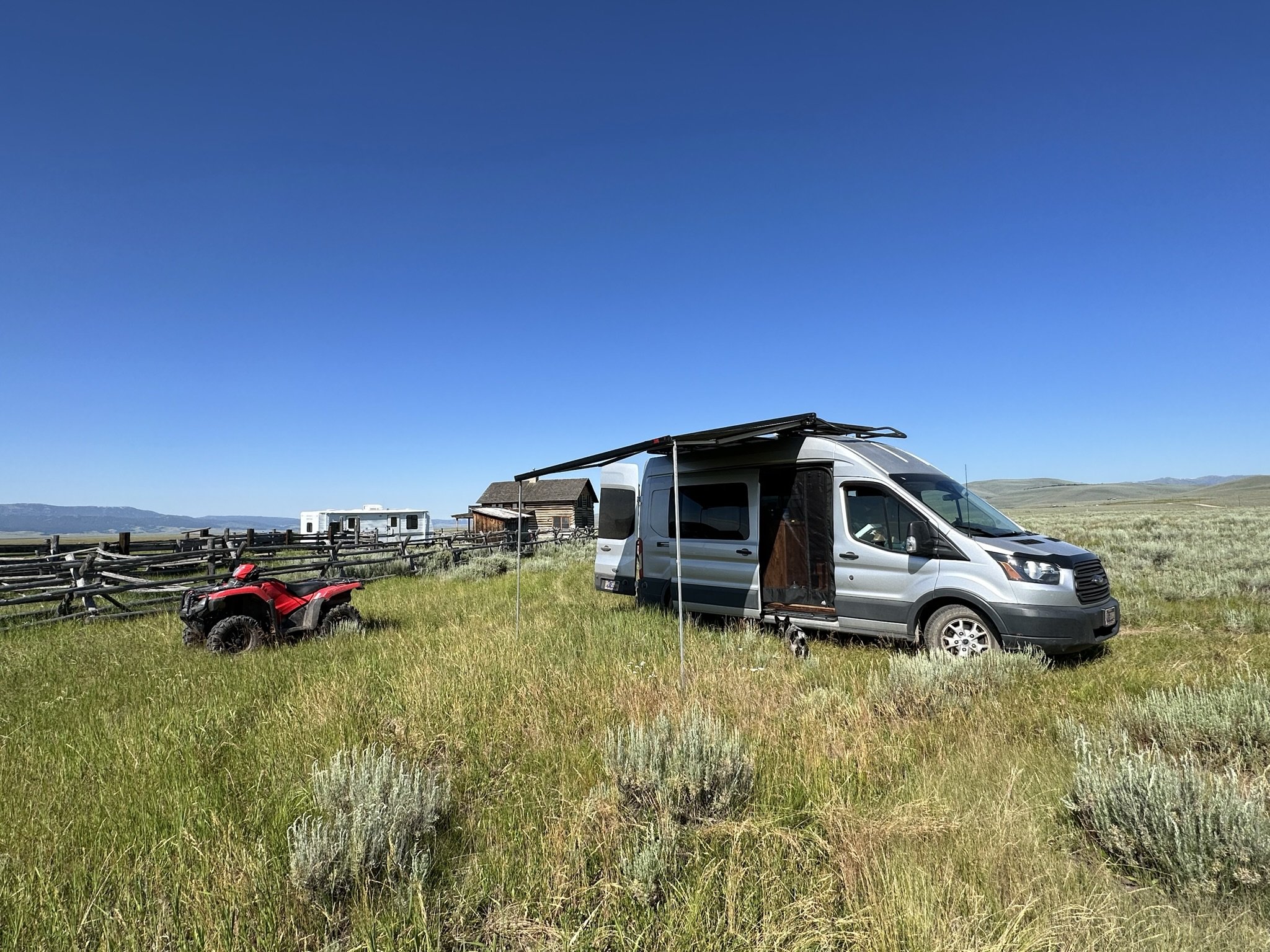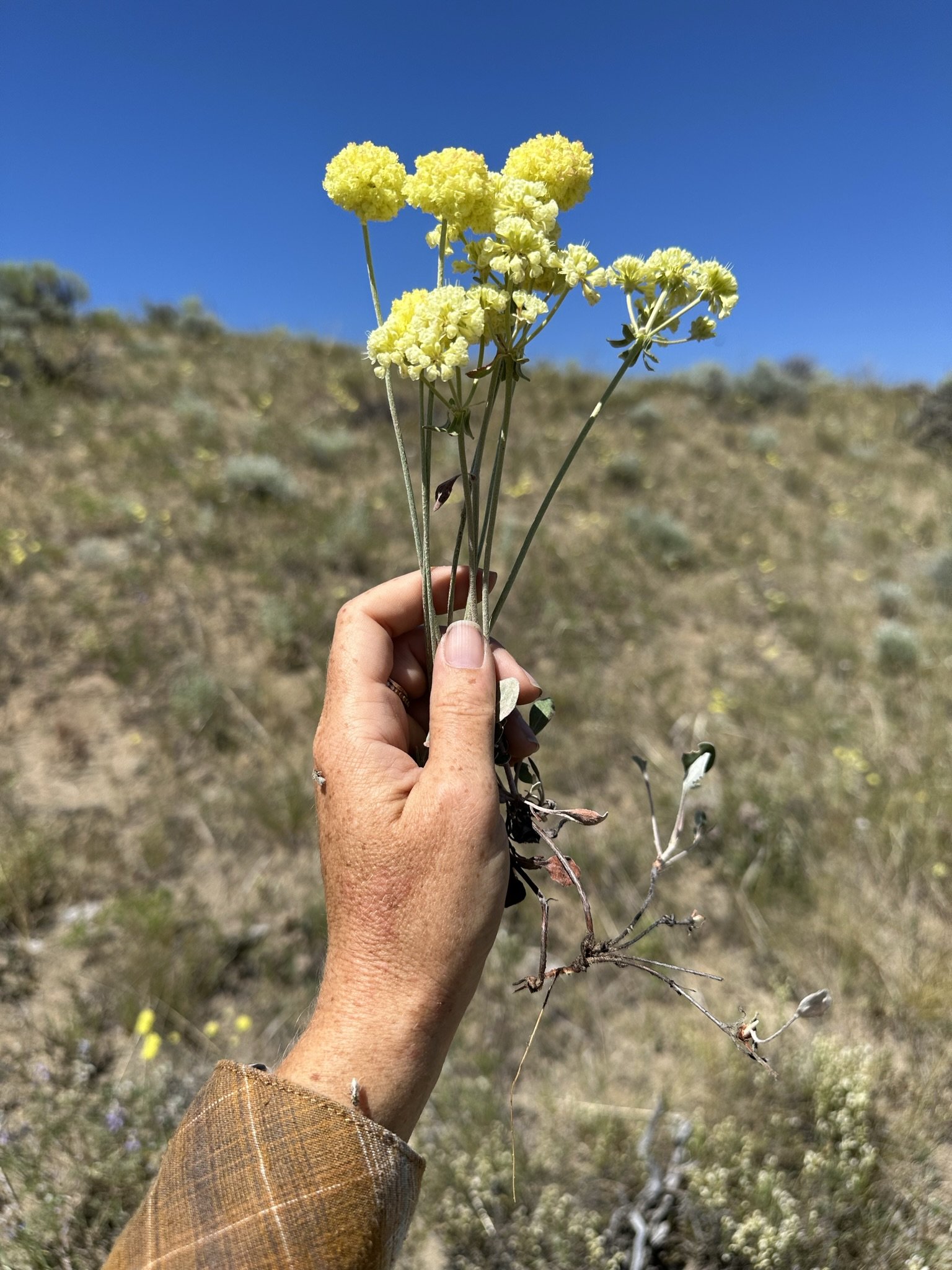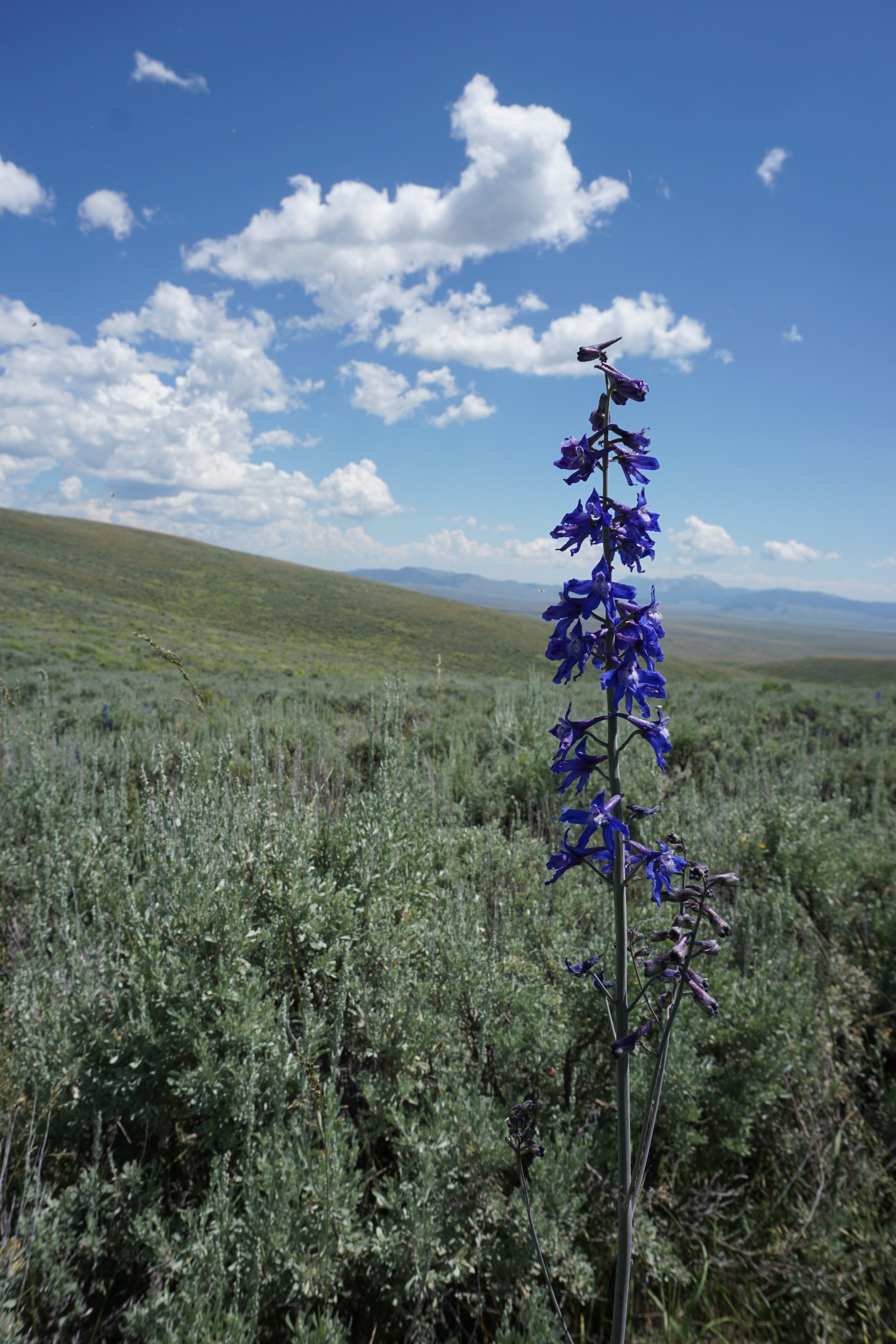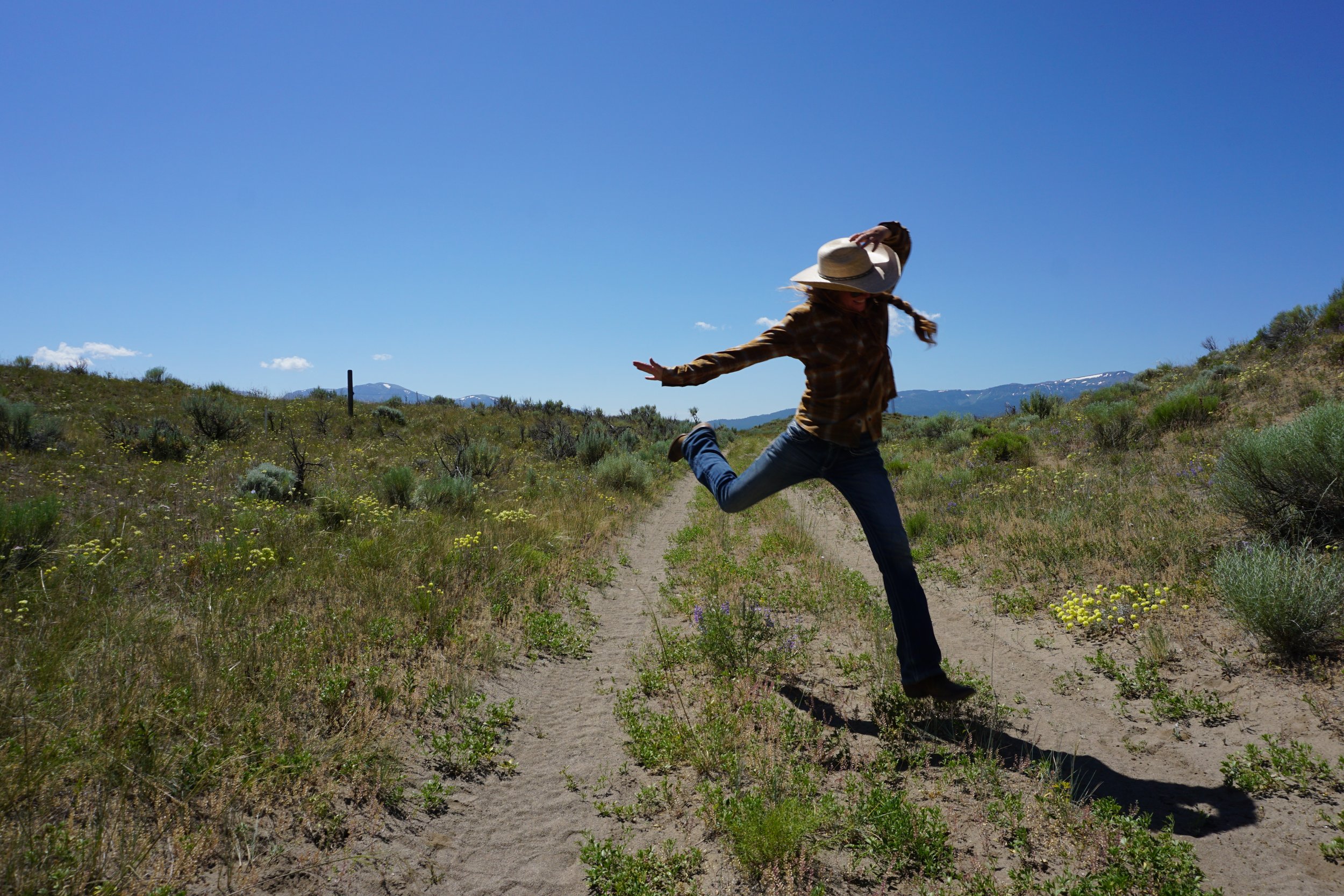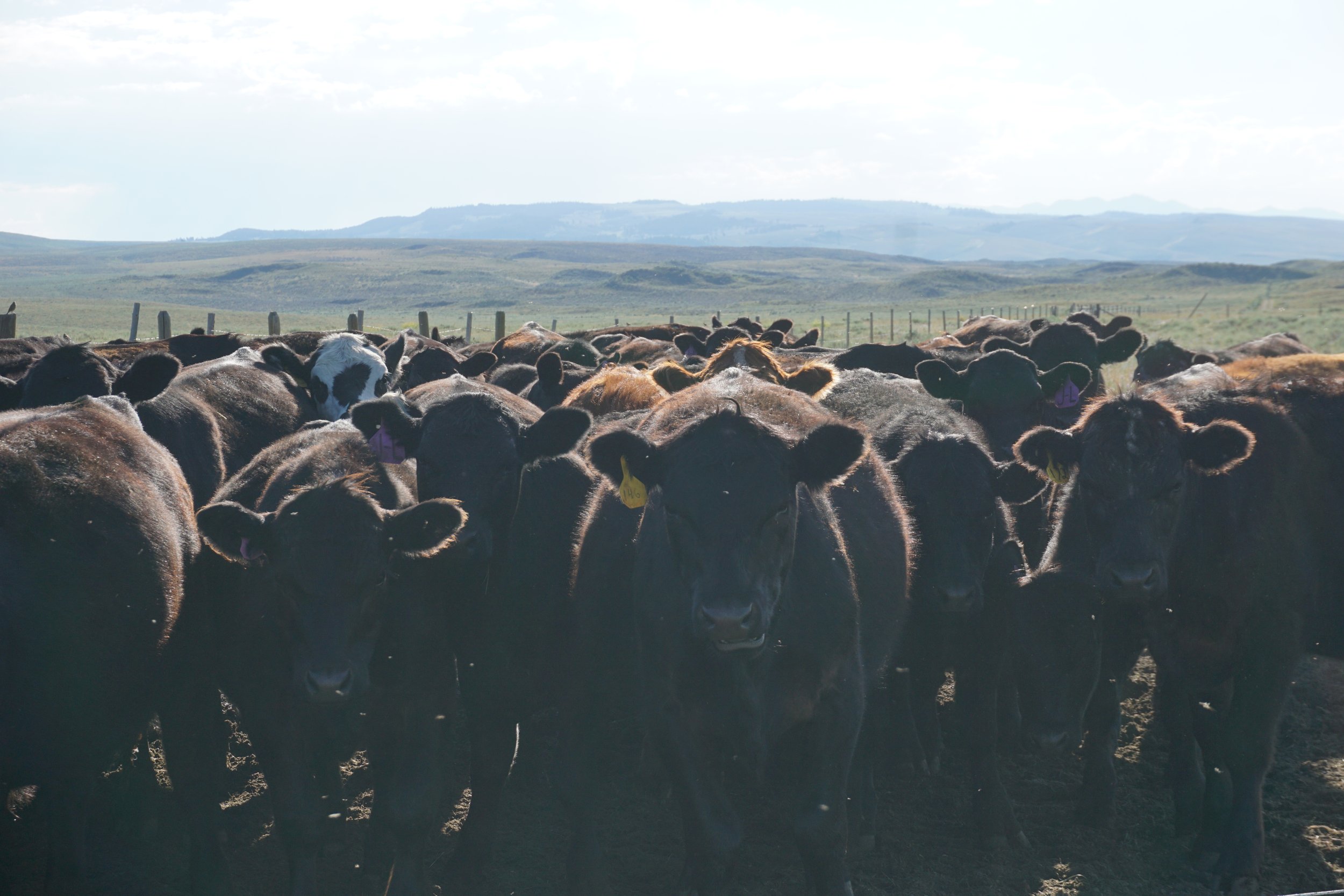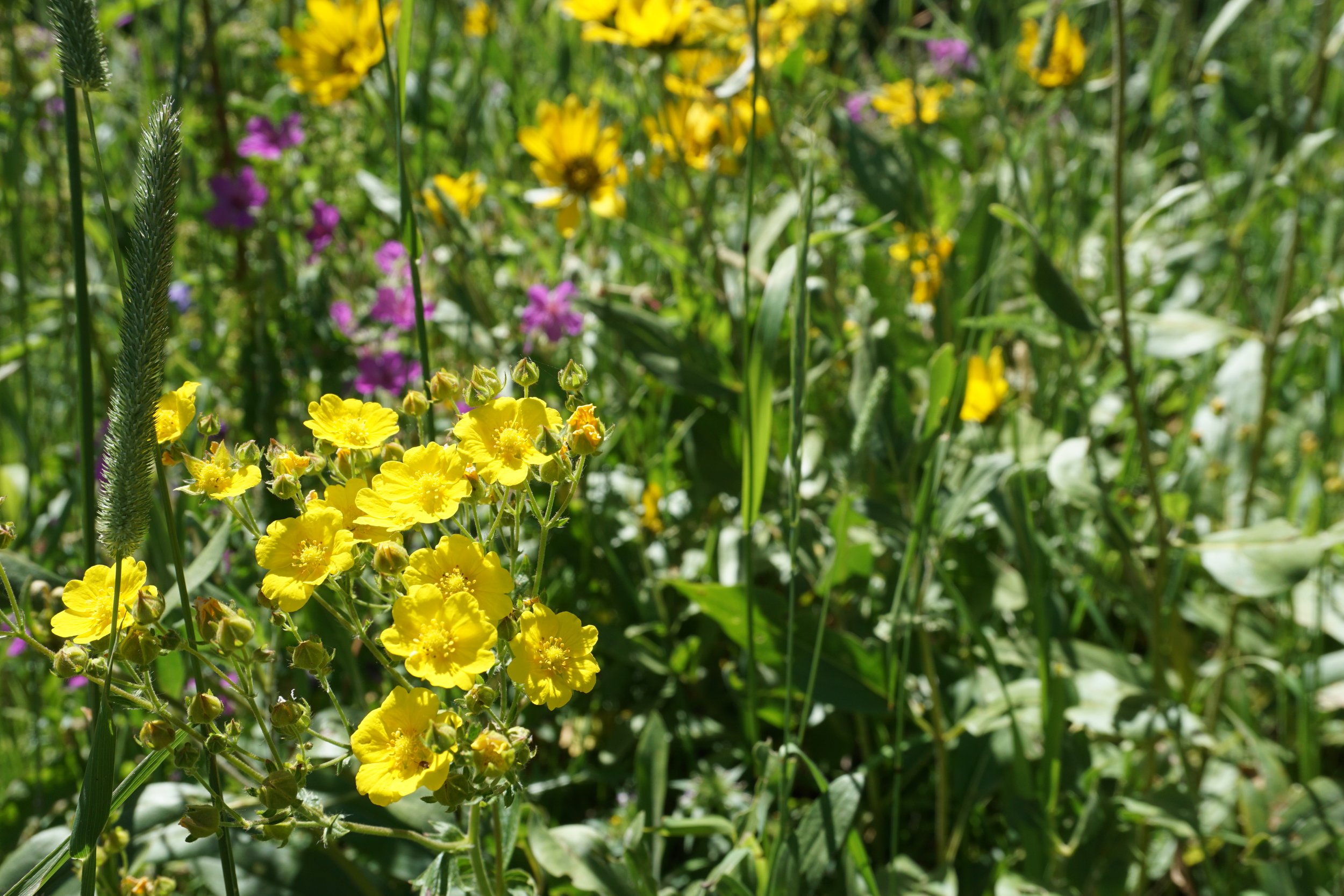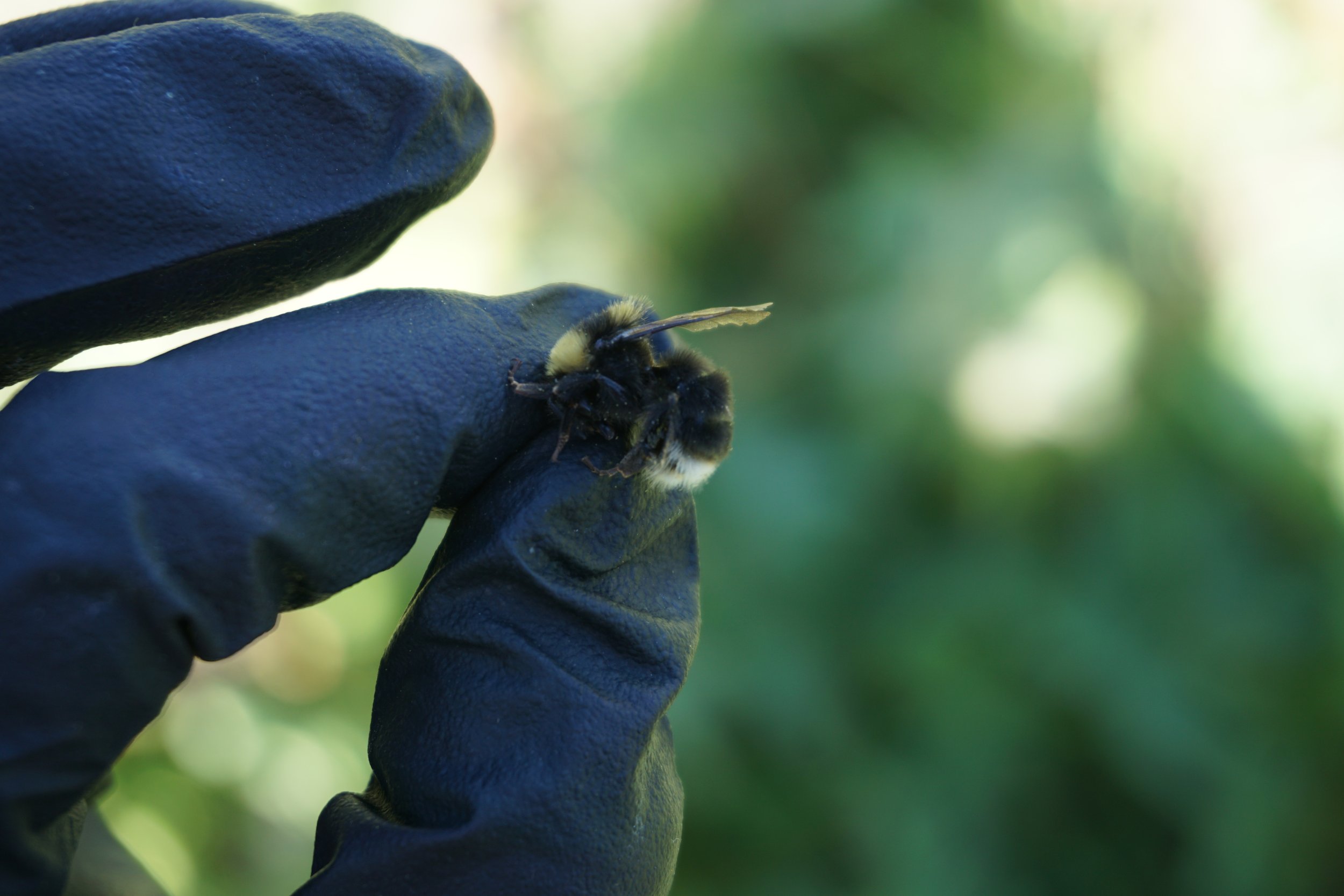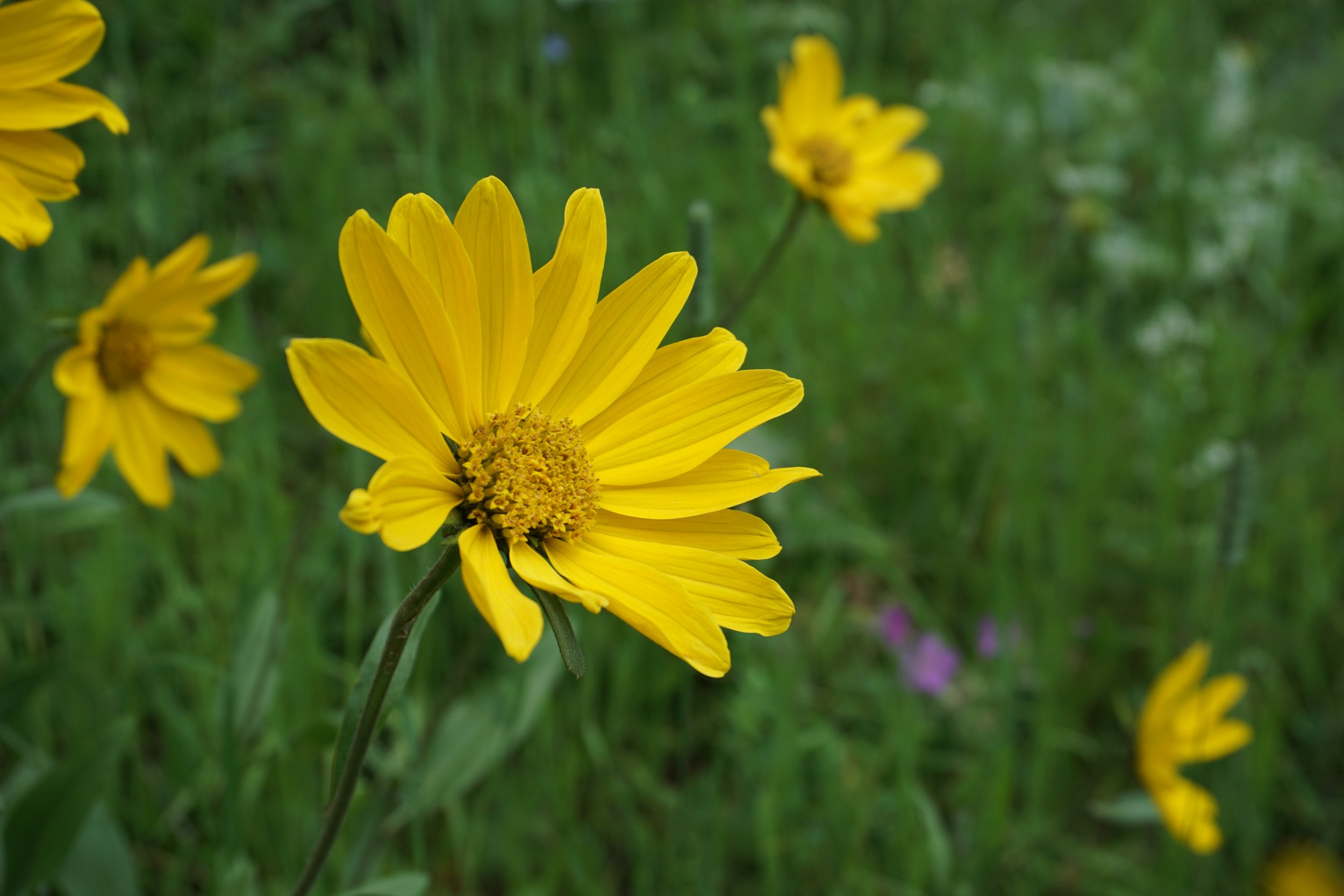Coexistence & Bee Habitat Regeneration
in the Greater Yellowstone Ecosystem
Beginning in 2023, BGO is starting a multi-year collaboration with the Anderson family, and three Montana ranches that they collectively manage: J Bar L in Centennial Valley, and the Anderson Ranch and Grizzly Creek in Tom Miner Basin.
In 2018 BGO’s executive program director, Sarah Red-Laird, attended a workshop at EcoFarm titled, “Range Riders: Coexisting with Predators,” featuring J Bar L Ranch’s Hilary Zaranek. As a student in the University of Montana’s “Wilderness and Civilization” program in 2008-2009, Sarah was all-too-familiar with the dynamic between Montana ranchers and wolf re-introduction. She hung on every word of the poetic presentation on low-stress livestock handling techniques and living within her cattle herd to protect them from bears and wolves (and vice versa, in a way), but what stuck with Sarah was the accounts of ecosystem recovery. Sarah questioned how Jar Bar L’s management transition to predator coexistence could affect local bee communities, did they recover along with the rest of the ecosystem?
Hilary’s experience of the return of biodiversity as a result of livestock grazing altercation and reintroduction of wolves, beaver, and bears mirrors those of similar projects in Oregon, Wyoming, and Nevada (Ripple, et al., 2022). Though there is ample evidence to prove trophic recovery from coexistence, a rigorous long-term study specifically on bees affected by this management tactic has not been published.
BGO is collaborating with the Anderson family to better understand the dynamic between the Greater Yellowstone Ecosystem’s livestock, predators, and bees – to explore the question, could livestock/predator coexistence on rangelands be a key to diverse bee community conservation?
This summer the BGO team spotted two Bombus occidentalis, an extremely rare bumble bee that is up for listing as an endangered species. They were in a mountain pasture that is co-grazed by grizzly bears and cattle.
Goals: To understand the potentially synergistic or mutualistic interactions between honey bees, native bees, livestock, and predators installing multi-year vegetation and pollinator monitoring areas at ranches in the Greater Yellowstone Ecosystem. These efforts will examine:
Bee nesting frequency – examine the presence/absence of soil nesting bee sites in areas disturbed by grizzly bears,
Bee habitat – identify the full complement of flowering forb species in the study area, and determine which forbs support pollinators and how the forb density in areas that practice range riding and co-existence compare with those that do not,
Bee communities – comprehensive sampling the of native bee species (including soil, stem/twig, wood, hive, and cavity nesting bees) using different passive and active trapping methods,
Other project goals include:
Collaborating on methods to increase flower density at our partner ranches.
Understanding landscape management practices at our partner ranches, and how they may influence bee communities.
Monitoring soil health at our partner ranches, and how this may influence bee communities.
Educating the general public on the cultural, nutritional, ecological, and tribal importance of predators as well as livestock, and their connection to bees.
Educating the agricultural community (specifically ranchers, beekeepers, and native bee conservationists) on the benefits of ranching and wildlife coexistence.


